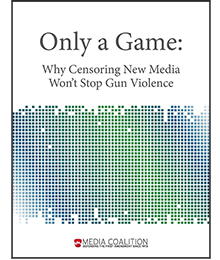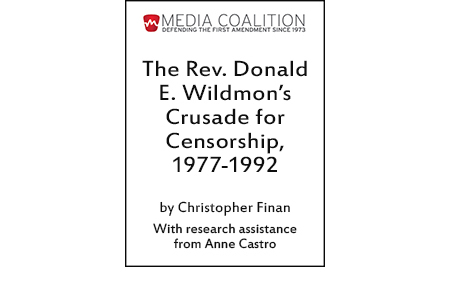MEDIA COALITION REPORTS
Media Coalition has published six in-depth reports and an accompanying resource material list on the most important First Amendment and censorship issues of the time. These reports are intended to educate elected officials, journalists and the public about First Amendment issues.
Only a Game: Why Censoring New Media Won’t Stop Gun Violence (2013)
Media Coalition issued the 13-page report, Only a Game: Why Censoring New Media Won’t Stop Gun Violence, in response to recent claims that media causes violence. The report looks at social science research studying the link between aggressive behavior and video games with violent images and finds that the data on the claimed harms of violent video games are highly controvertible, and even those that can be found are negligible and short-lived.
Shooting the Messenger: Why Censorship Won’t Stop Violence (2000)
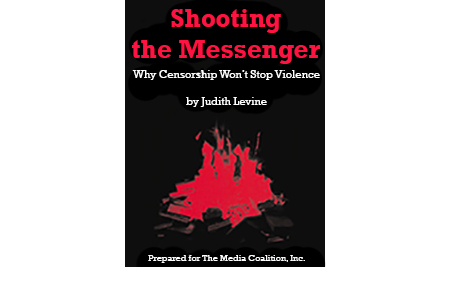 After the 1999 shooting at Columbine High School in Littleton, Colorado, the entertainment media was singled out as the culprit for the alleged epidemic of youth violence. But contrary to the claims of politicians and pundits, there is no consensus that violent content in media causes real-life violence. No one factor can account for aggression, and singling out violence in media fails to acknowledge and fix the real causes of violence, such as poverty, mental health and guns. The solution to ending violence is not censorship; instead it lies in free speech, informed speech and robust discourse.
After the 1999 shooting at Columbine High School in Littleton, Colorado, the entertainment media was singled out as the culprit for the alleged epidemic of youth violence. But contrary to the claims of politicians and pundits, there is no consensus that violent content in media causes real-life violence. No one factor can account for aggression, and singling out violence in media fails to acknowledge and fix the real causes of violence, such as poverty, mental health and guns. The solution to ending violence is not censorship; instead it lies in free speech, informed speech and robust discourse.
Catharine A. MacKinnon:
The Rise of a Feminist Censor,
1983-1993
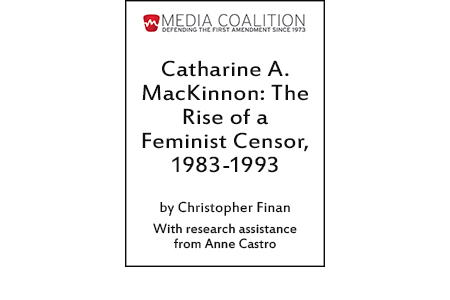 In 1983, Catharine A. MacKinnon launched a new breed of censorship: feminists against sexually explicit material. For MacKinnon and her fellow anti-pornography feminists, censorship is a legitimate tool for obtaining civil rights for women and children, whom they believed were victims of sexually explicit content. They transformed pornography from a sin to a sociological problem, dramatically shifting the debate over suppression of such material. But as evidence arose offering little link between sexual content and sexual violence, MacKinnon’s radical stance drew ire from fellow scholars and feminists. Despite her initial successes, MacKinnon’s advocacy had little impact where it mattered, as courts repeatedly struck down laws she supported.
In 1983, Catharine A. MacKinnon launched a new breed of censorship: feminists against sexually explicit material. For MacKinnon and her fellow anti-pornography feminists, censorship is a legitimate tool for obtaining civil rights for women and children, whom they believed were victims of sexually explicit content. They transformed pornography from a sin to a sociological problem, dramatically shifting the debate over suppression of such material. But as evidence arose offering little link between sexual content and sexual violence, MacKinnon’s radical stance drew ire from fellow scholars and feminists. Despite her initial successes, MacKinnon’s advocacy had little impact where it mattered, as courts repeatedly struck down laws she supported.
Sense and Censorship: The Vanity of Bonfires (1991)
Many censorship advocates promise of a better life if only society banishes some book, magazine or movie. But such promise rings hollow as censorship did not reduce drug abuse, teenage pregnancy and sexual violence or bring about other societal improvements. Most of history’s rapists, child abusers and drug addicts read nothing at all, and societies today where no sexual material or Western music is permitted do not boast social harmony or strong women’s rights records. The only thing that rings true about censorship is that it has always been more of a problem than a solution.
This report and the accompanying resource materials were written by Marcia Pally.
Sense and Censorship: Resource Materials (1991)
An accompaniment to Sense and Censorship: The Vanity of Bonfires, this report is a detailed investigation into the links between violent and sexual content and societal harms. After two national commissions and dozens of psychological and sociological research, little evidence exist that violent and sexual content corrupt society. Though it is easy to blame sexual material for rape and uncommon sexual practices, there is actually no link between them. Though rock and roll lyrics has often been vilified as contributing to teen suicide, there is no proof that music has influenced minors beyond providing entertainment. And while popular belief claims that community values reject such material, what Americans actually value is freedom of speech and their right to read, view and hear the materials of their choice.
The Rev. Donald E. Wildmon’s Crusade for Censorship (Updated and Revised), 1977-1992
The American Family Association continues today as the sole holdover of Rev. Donald Wildmon’s censorship efforts in the 1980s. Though it has since expanded to take action in “anything affecting the traditional American family,” AFA first began as another of Wildmon’s efforts to limit content on television and other media to what he deems is “moral.” This follow-up to Media Coalition’s 1989 report on Wildmon includes an updated list of the organizations and television shows that the reverend has targeted in his crusade for censorship, including the National Endowment for the Arts.
The Rev. Donald E. Wildmon’s
Crusade for Censorship,
1977-1989
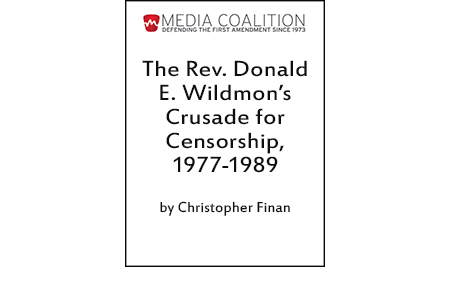 In the early 1980s, Rev. Donald E. Wildmon rose to national prominence as a firebrand who sought to boycott television shows and other media that he claimed were “immoral.” In his crusade for censorship between 1977 and 1989, Wildmon founded three short-lived, albeit vocal, organizations and partnered with The Moral Majority’s Rev. Jerry Falwell. The shows he protested spanned from “All in the Family” to “Three’s Company”; few programs and companies were spared from Wildmon’s attacks. But though Wildmon claimed he was only concerned about too much sex, violence and profanity in the media, it became clear that his true goal is to censor media that does not reflect his Christian worldview.
In the early 1980s, Rev. Donald E. Wildmon rose to national prominence as a firebrand who sought to boycott television shows and other media that he claimed were “immoral.” In his crusade for censorship between 1977 and 1989, Wildmon founded three short-lived, albeit vocal, organizations and partnered with The Moral Majority’s Rev. Jerry Falwell. The shows he protested spanned from “All in the Family” to “Three’s Company”; few programs and companies were spared from Wildmon’s attacks. But though Wildmon claimed he was only concerned about too much sex, violence and profanity in the media, it became clear that his true goal is to censor media that does not reflect his Christian worldview.

